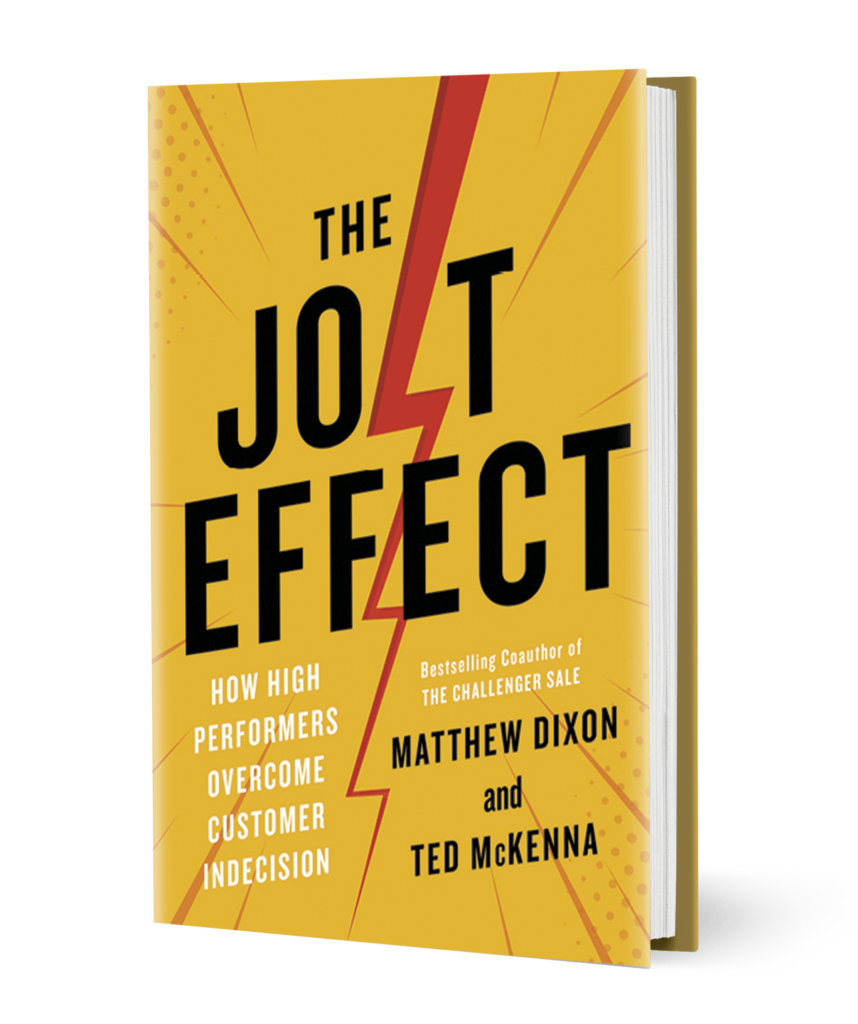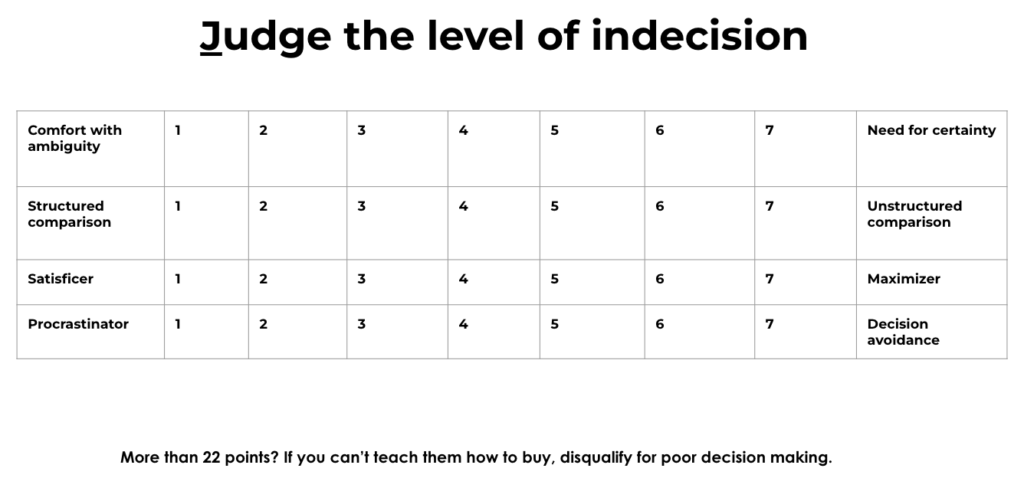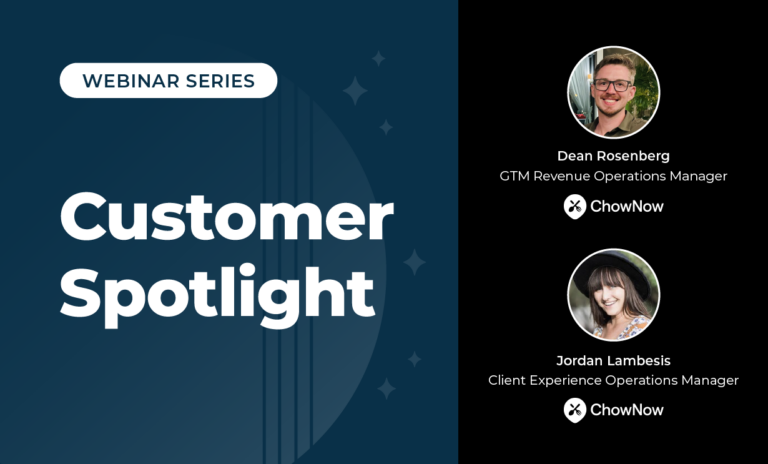Customer indecision is the bane of a salesperson’s existence. It’s that black hole where opportunities go, not closed/won, but not quite closed/lost either. Those deals-in-limbo still require work and the resources associated with actioning the opportunity. But, they threaten to be stuck in a very unrewarding, seemingly endless round-and-round cycle.
Indecision is always a challenge to the professional seller. However, today’s challenging economic environment amplifies it significantly.
Research shows that 40-60 percent of today’s potential deals end up in a “no decision” state of limbo. However, only 44 percent of those stuck deals are lost to the current status quo, where the prospective customer simply stands pat without the pitched product, service or solution. The remaining 56 percent of those deals in limbo are lost to a much more insidious foe.
Indecision. Neither yes or no.
And, research has shown the primary root cause of customer indecision is FOMU, or the “fear of messing up,” which, more often than not, overpowers the deal-closing impetus of FOMO, or the “fear of missing out.”
Jolting the Prospective Customer Out of Indecision
The JOLT Effect: How High Performers Overcome Customer Indecision is a fantastic new book from Matthew Dixon, the coauthor of the best-selling The Challenger Sale, and Ted McKenna, founding partner of DCM Insights, a boutique consultancy focused on using data and research-backed frameworks to help companies attract, engage, retain, and grow customer relationships.
 In their book, the authors show that when faced with customer indecision, sellers tend to step back in the processes and relitigate the status quo with the prospective customer. And, what do you suppose the results are when going back to cover ground that has already been tread upon? Their research shows there’s a negative impact on closing the sales 84 percent of the time!
In their book, the authors show that when faced with customer indecision, sellers tend to step back in the processes and relitigate the status quo with the prospective customer. And, what do you suppose the results are when going back to cover ground that has already been tread upon? Their research shows there’s a negative impact on closing the sales 84 percent of the time!
At this stage of the sales cycle, where prospective customers are stalled with indecisiveness, they don’t need to rehash the problems associated with their status quo. It doesn’t help them, and therefore, it doesn’t help the seller.
What those prospective customers need at the moment of indecisiveness is to be shown how they will not fail with the seller’s product, service or solution.
Removing Customer Indecision
In a challenging economy, buyers want to minimize their personal risk. Many are wracked with thoughts like “What if I choose the wrong solution?,” “What if I haven’t done enough homework and explored enough alternatives?,” “What if I don’t get what I pay for?,” and so many more. The JOLT Effect is designed to get them unstuck and advance them on their buying journey.

The JOLT Effect is as follows:
- J — Judge the type of indecision
- O — Offer your recommendation
- L — Limit the Exploration
- T — Take risk off the table
Judging Your Customer’s Indecisiveness
In my professional experience, I’ve found there are six main factors that contribute to a stalled, indecisive prospective customer. Those factors are as follows:
- The customer’s research stage is never ending
- The customer backtracks in their customer journey
- The customer’s buying criteria is disorganized
- The customer uses stalling language, like, “Our priorities are shifting” and “Give us a month to figure things out”
- The customer won’t get their peers involved
- The customer is a Maximizer as opposed to a Satisficer, looking for some ultimate, optimal solution rather than effectively impacting their problematic status quo

It’s important to determine if your stalled customer is a poor decision maker or just a procrastinator. To make that delineation, make a powerful request, like asking to arrange a meeting with the chief financial officer to review a use case and ROI model. Your run-of-the-mill procrastinator will likely book the meeting. Your poor decision maker will again deflect.
Some individuals might prove to be such poor decision makers that you might have to simply cut bait and fish elsewhere.
Offering Your Customer a Personal Recommendation
When customers struggle with valuation problems, many professional sellers simply ask the customers what they want, and defer to their preferences. Of course, we know that doesn’t often work to our advantage in moving an opportunity forward.
There’s a better way forward, and that’s with a personal recommendation, something along the lines of, “Here’s what I would do if I were you . . . .”
A personal recommendation delivers a much more powerful punch than a general recommendation, and is a proof point of a seller’s advocacy for the customer. And, it works! Research from the JOLT authors suggest win rates are 36 percent higher when sellers both diagnose and offer a personal recommendation.
Limiting Your Customer’s Exploration
Former Secretary of State Colin Powell deployed a time-tested approach whenever he needed to make a quick decision, what he called the 40/70 rule. Powell would strive to not make a decision with less than 40 percent of the information he needed, then ultimately make his decision when he had at most 70 percent of the potential information available.
What was good enough for Powell will likely suffice for your prospective customer.

Limit your customer’s exploration by using one or more of the following tactics:
- Don’t settle for mediocrity. Mediocre performers are perfectly happy to indulge a customer’s superfluous information request.
- Own the flow. Do not cede control of the flow to others within your organization or the customer’s — if you have to bring in an expert, stay in control.
- Conduct a “pre-buttal.” Anticipate objections and look for signs of implicit non-acceptance. Go after uncertainty and make sure issues are rebutted.
- Practice radical candor. If the element being requested by your customer isn’t a good use of everyone’s time, be honest and say so. Look for the real problem the customer is trying to solve by asking for “more.” Ask “Why?” five times to get to the true root of the problem.
Taking Risk Off the Table for Your Customer
When addressing a stalled, indecisive customer, it’s tempting for sellers to fall back on past tactics. You know — we’re all familiar with them, and we’ve all used them at some point in our careers. They include responses like:
- “The cost of doing nothing . . .”
- “I’d hate for you to miss out . . .”
- “The price goes up after . . .”
- “Our Professional Services team is really busy . . .”
Those responses didn’t work that well back then, and they’re particularly ineffective with indecisive buyers in today’s business environment.
Look for ways to get creative and eliminate — or at least minimize — your customer’s perceived risk. Address their hesitancy around perceived risk and help them feel good about stepping forward.
First, sell to reasonable expectations. Second, present a detailed implementation or deployment plan.
If you still need more to push forward, offer to start smaller. Instead of adding more and more and selling a volume discount, address the risk factor by suggesting to start smaller and work bigger after initial and ongoing success.
Stop Selling and Start Helping Your Customer to Buy
The best sellers know that once you’ve addressed the status quo and presented a solution to the buyer’s problems, challenges and/or obstacles, the time is ripe to stop selling and start helping the customer buy. It’s a best practice for any situation, and it’s absolutely essential when dealing with a buyer crippled by indecisiveness.
You know it’s time to help a customer buy when you have engaged in a good evaluation and are convinced the customer is fully informed but yet is still repeating requests that have already been met.
Helping a customer buy requires pivoting from being a seller to being a buyer’s agent. To do so, consider the following tactics:
- Demonstrate you are a subject-matter expert (SME)
- Offer positive feedback on a competitor
- Offer less not more with respect to cost
- Openly admit if you don’t have an answer
- Openly admit your product, service or solution can’t do everything
- Practice radical candor
Good luck selling!








